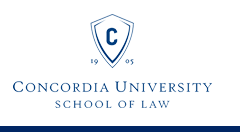Document Type
Comment
Abstract
Fertility medicine is seeing a rapid advancement with the emergence of a new procedure called three-parent in vitro fertilization (IVF). This novel procedure provides an opportunity for women who have defective mitochondria to bear their own healthy genetic children. As women encounter fertility issues, they will often turn to regular IVF by receiving an egg from a donor—ultimately resulting in a child with no genetic relation to the mother. Women with defective mitochondria will likely pass down a mitochondrial disease to their children, therefore, bearing a child without the assistance from a donor does not present a viable option. Mitochondrial disease can be quite severe and traumatic, usually affecting the central nervous system. It can contribute to many serious illnesses such as Parkinson’s, Alzheimer’s, and cancer. Currently, there are no treatment options available for people with mitochondrial disease. Regular IVF requires an egg from a donor to replace the mothers egg, therefore, the mother is not genetically related to the child she bears, as the egg donor is the genetic mother. Three-parent IVF is a breakthrough fertility treatment procedure that allows women with defective mitochondria to bear a healthy child by receiving healthy mitochondria from a donor. This procedure enables women to retain a genetic bond to their child. Since a donor’s healthy mitochondria is transferred to the mother’s egg, the child will technically have three genetic parents (two mothers and a father).
Three-parent IVF is currently not allowed in the United States, but with responsible legislation, it could be legal in the near future. This Comment proposes that three-parent IVF is implemented as a clinical trial for the purposes of conducting research to assess for safety and effectiveness. Current safety regulations and guidelines, primarily those regarding human tissue donation and transplantation, are quite instructive when put in the three-parent IVF context. These regulations and guidelines are discussed in some detail. There are a couple of steps that need to be taken in order to successfully implement three-parent IVF in the United States. First, great strides need to be made to reform the broken medical malpractice system in the United States. Current medical malpractice standards, and the available remedies to fertility plaintiffs, are not adequate to accommodate such a procedure. This Comment proposes that we move away from the customary care standard, and towards an evidence-based standard of care, while adopting the reasonable patient standard of informed consent. These standards will help address the inefficiency problems that exist within the medical profession. Second, since medical malpractice lawsuits are too costly for most fertility plaintiffs to pursue, there needs to be a fertility court established within the United States Court of Federal Claims—following in the successful footsteps of vaccine court. A fertility court will give fertility plaintiffs a remedy when they are injured by a doctor’s negligence, when no such remedy would have otherwise been available. Also, the establishment of a fertility court will lower fertility doctor’s medical malpractice premiums by reducing their overall litigation liability—as fertility plaintiffs will primarily turn to fertility court to redress their injuries. The United Kingdom is leading the world into the future by being the first country to approve the three-parent IVF procedure. The time has come for the United States to take a serious look at three-parent IVF to help advance fertility medicine into a promising and hopeful future.
CU Commons Citation
Fulk, Jay M.
(2018)
"Two & A Half Parents: Three-Parent IVF and Medical Malpractice in the United States,"
Concordia Law Review: Vol. 3:
No.
1, Article 7.
Available at:
https://digitalcommons.csp.edu/clr/vol3/iss1/7

